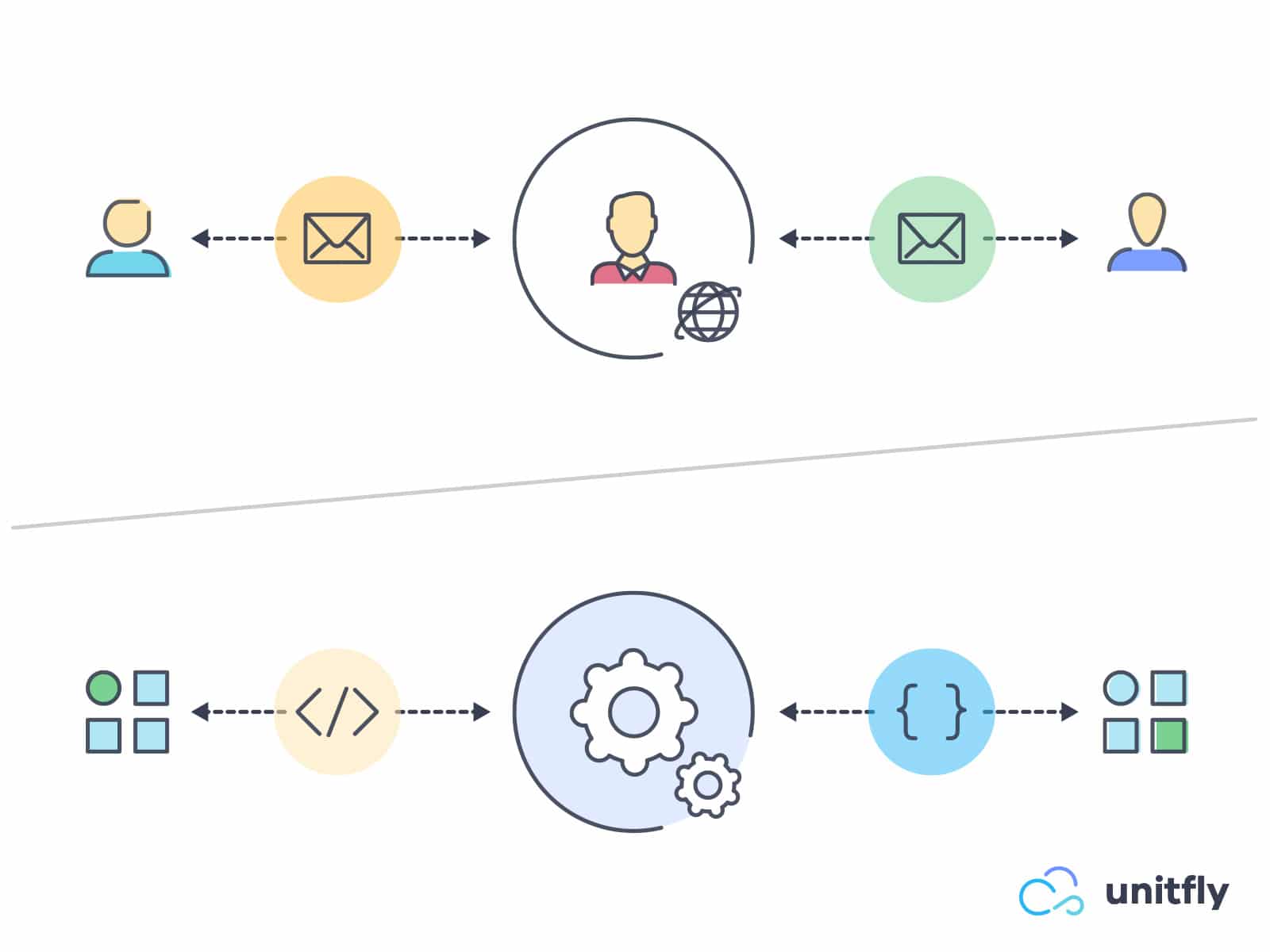
What is System Integration?
Let’s focus on human communication for a second. If two people who speak in two different languages want to communicate, they can try communicating with their arms, legs, and facial expressions (which we surely all had to do a few times in our lives). Or they need a person who can understand them both. That person, the translator has the same role as the integration system.
“Integration is communication (translator) between systems.
Every system has its own language, the way it understands input commands and responds with output. If another system wants to communicate, that system would need to know how, it needs to know the language of other system.

However, integration doesn’t always have to act as a middleman, it can be done on one side only. In technical terms, when a solution can connect to a database or some other system, integration module is present inside that solution. Then, integration module translates to a language of other system.
We will introduce the three types of system integration.
Three types of system integration
Based on the area and the type of use, integration services can be divided into three categories:
- Enterprise Application Integration (EAI)
- Data Integration (DI)
- Electronic Document Integration/Interchange (EDI)
Enterprise Application Integration (EAI)
Enterprise Application Integration is a service-based integration. It’s a process that communicates with different services, gathers data, and then proceeds with further steps based on desired action or a workflow. Process can be triggered with the exposed service.
Data Integration (DI)
Usually, every company has a lot of different data sources (or databases). When you want to consolidate your services into one central point of access you need data integration. Data integration enables gathering of data from all services, aggregating, and transforming them into a central place for interactive reporting, most commonly used for management.
Electronic Data Interchange (EDI)
Electronic Document Interchange is core business to business-oriented process. It functions on paperless exchange of documents and electronic standards. By automating paper-based business, companies save time and eliminate cost and errors.
If you are new to system integration world or you want to know how system integration can help your business, talk with one of our solutions architects.



